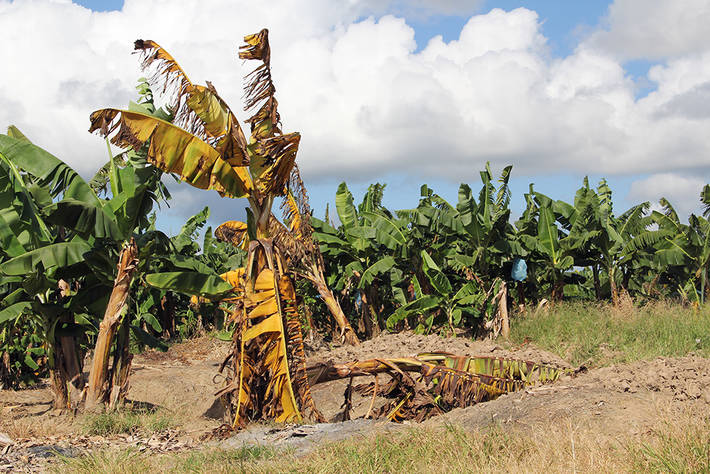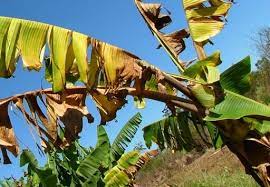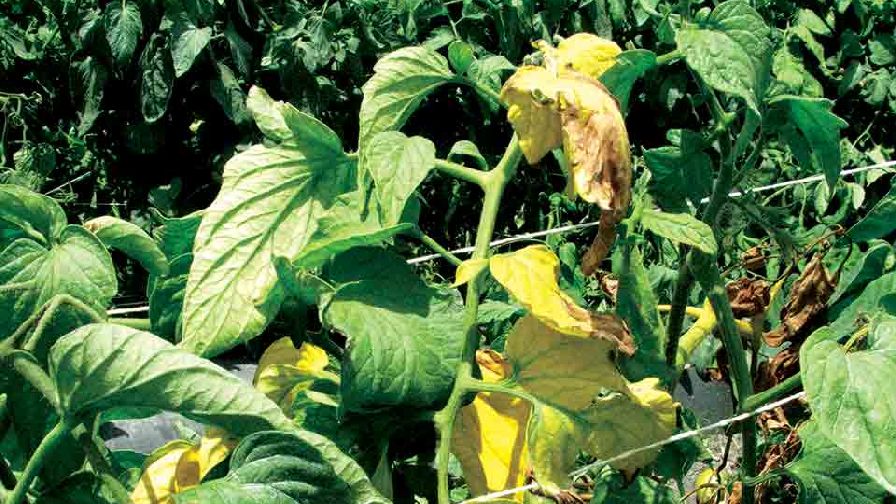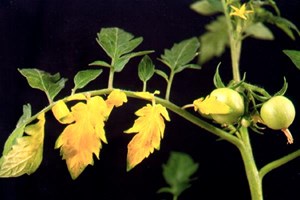What is fusarium wilt disease?
Fusarium wilt is the most destructive fungal disease affecting banana plantation across the globe. It is caused by a type of soilborne fungal called Fusarium oxysporum f. sp. cubense (Foc).
The pathogen infects banana roots and takes over the vascular tissues, disrupting the flow of essential nutrients from the roots to the tops of the plants. It was first identified in Australia and has since spread around the world, including much of Africa.


Symptoms of fusarium wilt on banana plants
Fusarium is a soil-borne fungus that infects the roots of banana plants. The illness clogs the capillaries and prevents the flow of water and nutrients as it travels up the plant.
Stunted growth, leaf deformation, and yellowing, as well as wilt around the edges of older, lower leaves, are the first evident signs of banana fusarium wilt. The plant’s leaves progressively droop and fall, eventually drying up altogether.
symptoms of fusarium wilt on tomatoes
Although Fusarium wilt can be mistaken for other wilts, the following symptoms can help you recognize it in tomatoes:
- Wilting- The plants will wilt to the point of death. It usually begins with a single leaf or shoot at the plant’s apex. It will recover at night when the temperature drops, but as time goes on, the entire plant will wilt and die. There is no difference between watering and not watering.
- Yellowing- Lower leaves will turn yellow, usually starting on one side only. The yellowing, like the wilting, will slowly move up the plant.
- Dry Leaves- The wilted leaves will dry out and fall off.
- Discolored Stem- If you cut open the stem length-wise you will see dark brown streaks.

Managing fusarium wilt in bananas
Because effective chemical and biological therapies for fusarium wilt in bananas aren’t currently available, control relies heavily on cultural approaches to avoid spread. Fungicides, on the other hand, may be useful in the early stages.
Fusarium wilt in bananas is difficult to control since the pathogens can be spread via shoes, tools, vehicle tires, and run-off water. Clean up all detritus from growth areas at the end of the season; otherwise, the pathogen will overwinter in leaves and other plant matter.
The most significant method of control is to replace damaged plants with cultivars that aren’t resistant to the disease. The infections, on the other hand, can remain in the soil for decades, even after the banana plants have died, so it’s vital to grow in a disease-free environment.
Management and control of fusarium wilt of tomatoes
Fusarium has no cure, and because it can live in the soil for years, it can be difficult to eliminate. Here are some measures to help you keep it under control.
- Resistant Varieties- Choose tomato cultivars that are resistant to Fusarium wilt if you’ve had trouble with the disease. The resistance to many diseases will be labeled on seed packets and many seedlings. If the letters VFN appear on a tomato variety label, it signifies the seed or plant is resistant to both verticulum and fusarium wilt as well as nematodes.
- Sterile Potting Soil- If you are starting your own seedlings, begin with a sterile soilless potting mix.
- Increase the Soil pH- Apply lime to the soil in your garden, to bring the pH up into the neutral range of about 6.5 – 7.0.
- Control Nematodes- Because root-knot nematodes can reduce resistance to Fusarium wilt, don’t allow nematode populations to proliferate in your soil.
- Don’t Cultivate- Avoid damaging the roots of your tomato plants by not utilizing a hoe or cultivator around them. The pathogen enters through damaged roots.
- Disinfect Tools- Wash any tools that have come into contact with contaminated soil, and make it a habit to wash and thoroughly clean your garden tools on a regular basis.
- Rotate Your Crops-Because the pathogen can live in the soil for years, you’ll need to find another location to plant your tomatoes. A five to seven year rotation is highly suggested, but even this does not assure that the pathogen is completely eradicated.
- Remove Infected Plants- Despite the fact that the disease is soil-borne, some of your tomato plants may be more resistant. Remove and destroy the diseased plant. Composting is not permitted. This can help to reduce the spread of disease through contaminated tools, gloves, and clothing.
Sources: https://sps.govmu.org/2020/11/emerging-pests-and-diseases-in-the-region/
https://www.thespruce.com/fusarium-wilt-of-tomatoes-1402965
Access Date: 29th April 2022





